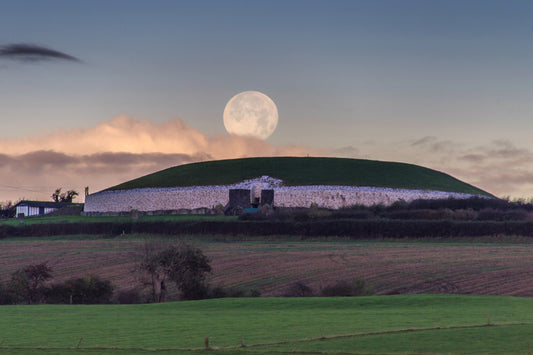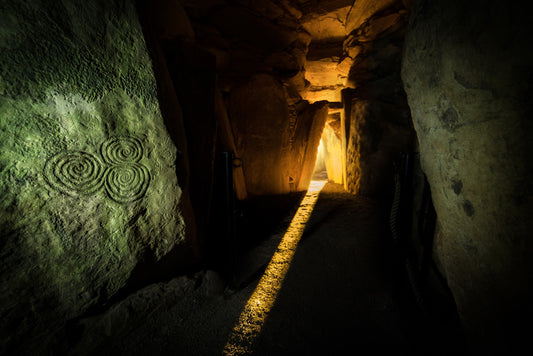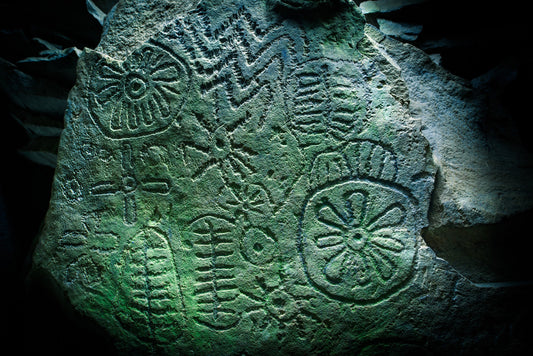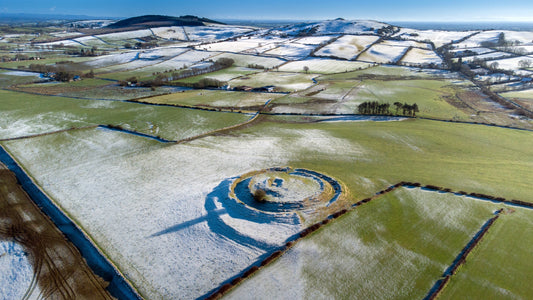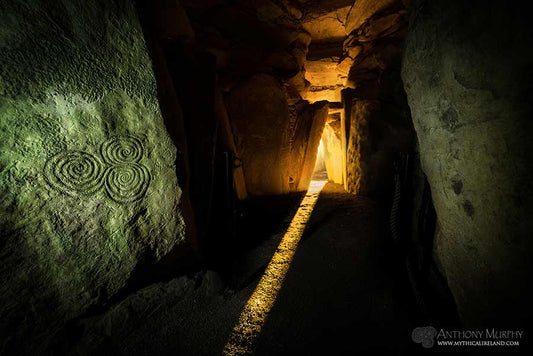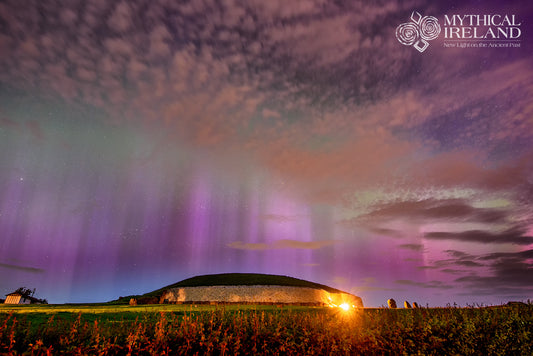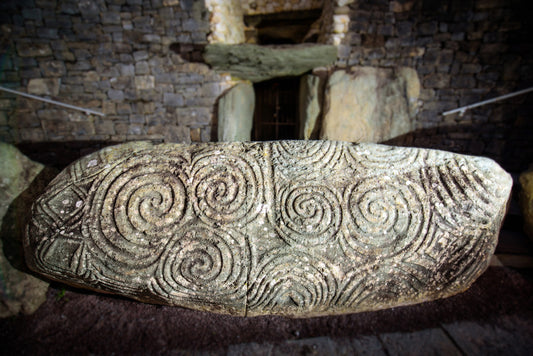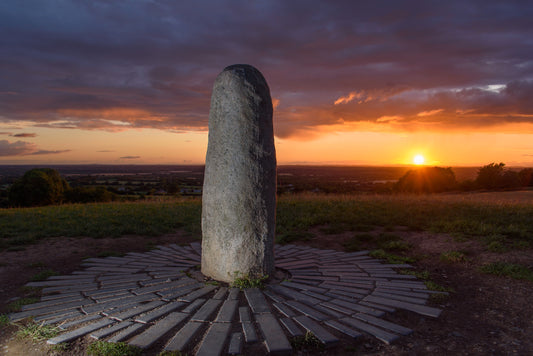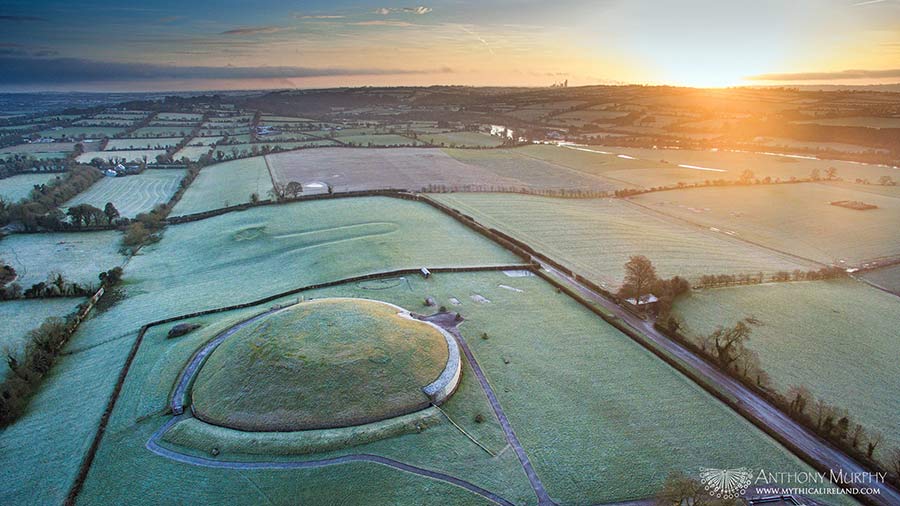
How on Earth did Newgrange Handle Leap Year
In this article, Gillies MacBain examines whether the builders of Newgrange were aware of the leap year – how they might have discovered it and what they might have done to incorporate knowledge of the leap year into the design and structure of the monument.
If you ever become tired of the bland certainties repeated by Boyne Valley tour guides – position yourself right at the back of the group and when your moment comes, fire out this question:
“How did Newgrange handle leap year?”
There will be a pause. Well, how did they? The tour guide will not know. No archaeological treatise will tell her. No astronomical volume will enlighten her. No senior Bord Fáilte executive will even consider it their job to find out for her.
Perhaps you think that it is a trivial, nit-picking question. Just one day in four years. 0.00068 of the time. But it is not trivial. The exact length of a year is the holy grail of calendar makers, and if they do not have a precise measure for the year, they have nothing.
It has become a commonplace piece of information that the sun, unless clouded, shines right into the Newgrange chamber – and will do the exact same thing a year later, and every year.
Not so.

You see, the sun in fact never shines into the Newgrange chamber on two occasions exactly one year apart. As a child the length of a year and they may say 365 days. As a student and they may say 365 and a quarter days. Not quite as good. Ask an astronomer and they may say 365.2422 days, and that is bad – stating an average. No Neolithic priest or druid ever woke on an average day to begin an average year. The truth is that the length of a day is unrelated to the length of a year, and the midwinter morning’s dawn occurs after 365 days, 365 days, 365 days, and then 366 days – and never in between. There is a natural leap year cycle.
So do you imagine that the quarter day by which the year exceeds the 365 days can safely be ignored? It cannot.
The Egyptians of the Nile valley, who began their year with the heliacal rising of the star Sirius, tried to ignore the leap year fraction, seemingly, and ended up with the “Sothic cycle” (Google it) which meant that their whole calendar revolved every 1,460 years, and, half way around that, the midsummer months all came in midwinter!
The reforms of Julius Caesar, in consultation centuries later with the Egyptian Sosthenes, failed to put an end to the problem. The later Gregorian reform was still needed as the tiny discrepancies added up over the centuries to become significant distortions. Any “sure, it’ll do” approximation comes back in time to haunt the calendar maker.
You may say: “What would it matter if the solstice came around then the diary said it was still early November?”
To calendar makers of any era, it would matter.

A clever twist
There is a clever serpentine twist in the Newgrange passage. No amount of consulting astronomical tables will tell you what it is.
The twist, which is subtle but shows up on any good plan of the mound, allows a portly druid to have access to the chamber, while only admitting a narrow beam of light. You could be looking at it for a long time before the penny dropped. People love to see “mystery” at Newgrange, but it also helps to have an eye for the mundane practicalities.
If you let the Newgrange year be just 365 days with 365 dawns, you would eventually end up months adrift, like the Egyptians did with Sirius – and Newgrange was not built with plywood for a three-day festival, it was meant to last for centuries.
It takes a little careful thought to visualise that the leap year is not a human convention but a natural occurrence.
Yes indeed, exactly where to make the correction (“let’s just shove it in here at the end of February?”) is a mere convention – but the need for a reconciliation between the days and the year is a basic fact of calendar making. The days do not fit exactly into the year, and this makes a reconciliation necessary. It is an observable fact about the rhythms of the solar system.

So who made the reconciliation – and when?
We have no names for the individual Neolithic Irish – and a sacred observatory maintained over many generations is better considered the work of a “college” of observers rather than some individual genius – but we can take a guess at the “when”.
The mounds of Knowth (definitely), Dowth (definitely) and Newgrange (most probably) were all expanded from earlier and more compact mounds.
A greater mound created cover for longer passages. Like the barrel of a rifle, a longer passage made for narrower focus and greater accuracy – and what more pressing need for accuracy than monitoring the exact and precise individual sunrise or sunset as the sun moved north (spring) or south (autumn) along the horizon?
The observers were now seeking accuracy not to the day, but to the quarter day. (That is the annual shortfall in the Julian calendar: one day short in four years – or an exact quarter day.)
Precise observation could be achieved more easily closer to the equinoxes, when the daily movement of the sun is greater, than near the solstices when the sun slows to a turnaround. Thus it is logical to suspect that the accuracy was achieved in an east/west passage at Knowth. (Neither Dowth nor Newgrange have one).
As for “when”, the answer has to be (a) after Knowth was expanded, but (b) before Newgrange was completed.
And when was the leap year solution first sought? It was probably sought from when the discrepancy was first recognised. This need not have been at Knowth, or even in the Boyne Valley …

How was the reconciliation effected?
All of the opinions expressed here are those of the author of this article – not of the compilers of the website. You will have noticed that my conclusions are derived not from archaeology nor from astronomy (although knowledge of both is required) but simply from the logical implications of astrocalendrical arithmetic.
Calendrical reconciliation is a matter of seeking for coincidences. The so-called “Metonic” cycle reconciles synodic months (235) and sidereal months (254) with years (19 years).
So what have we found?
Some Boyne Valley observers must have become aware of the discrepancy between the year length and the length of 365 days. They may have ignored this, like a clock that runs a little slow – or they may have created leap days. To make these at the correct intervals, they first needed to improve the accuracy of the orientated passages at Knowth, by lengthening them.

At the same time, they also revised the predictive passage of Knowth (west) from 13 sidereal months to the different units of 13 synodic months. The event predicted in each case was the following vernal equinox, approximately one year ahead.
This was a revolution. It explains the “kink” in the west passage – the inner section indicating the azimuth and approximate length of the previous mound’s passage.
Were they happy with the result? No
No they were not satisfied.
How can we prove that? Interestingly, as explained already, astrocalendrical arithmetic is derived from astronomical coincidences. “Coincidence” means “without any underlying cause or connection”. Do you follow that? What has no cause is not susceptible to scientific proof – so those who look for it are completely wasting their time.
Astrocalendrical analysis is not a scientific discipline.
So do I still think that they were not satisfied? Yes, I do.
And why would they be so fussy about time, when they had no trains to catch?
They would have been fussy about discrepancies because small discrepancies – like those of the old Julian calendar – allowed to accumulate over repeated astronomical cycles, eventually grow into significant inconveniences and can be ignored no longer.
Take a watch that loses only a minute a day. By the end of a month it will make you half an hour late for work. The boss might not like that.
By long and patient observation, or just by trial and error, the first and simplest of known leap day formulae – “add one extra day every four years” – will be found to be a slightly less than perfect approximation, and then the hunt will be on to find a better one.

A better approximation is “add one extra day every four years, skipping the 33rd year”. In other words, have eight leap year days, not in 32 years, but in 33 years.
What is this? It is a “rule of thumb” which involves no theory. It is just a closer approximation expressible in whole numbers.
After that comes the formula behind the Gregorian reform, which not many could put their finger on without looking it up to refresh their memory:
97 leap days / to every 400 years.
(A further refinement to the original one-in-four Julian ratio).
This formula, not actually an improvement in accuracy, is attractive because of the round number 400, which amounted to 100 Olympiads in the longstanding Greek tradition that also harmonised with the eight-year period of five (584-day) Venus cycles, another calendrical coincidence.
Calendrical formulae are not always acquired by cultural transmission. The same answers arise simply because the heavenly cycles pose the same questions, to all observers.
The lethal trap which awaits those who tolerate even minor inaccuracy, is that a formula to begin a new year – such as “the first full moon after the vernal equinox” – can throw a calendar a whole month adrift, if there is any disagreement as to the precise hour of that full moon or equinox.

So does Newgrange work?
Newgrange is an integral part of the Boyne Valley group of three large passage-mounds, and, in that context, it works. The three were planned out systematically from knowledge already gained from older and smaller mounds. How else could it be done?
In conclusion: civilisations both wax and wane, and do not move only in waves – there also are tided. Between late Neolithic and early Christian Ireland came a savage and violent period in which knowledge was lost. (This idea offends both the Victorian idea of “progress” and the modern fantasy of never-ending economic growth derived from finite resources).
To understand the Boyne Valley passage-mounds, it is not helpful to underestimate the intellectual level of those who devised and constructed them. They achieved all of this without iron tools, writing, an alphabet, horses, the wheel, or other useful inventions.
Newgrange points to a level of intellectual achievement not reached since then in our own Irish society. Denial of that fact only handicaps a search for calendrical understanding.
They must have had some kind of oral education system, to forward major projects that, like medieval cathedrals, were going to take more than one generation to achieve.
Astrocalendrical analysis
Astrocalendrical analysis, then and now, is not a science. The answers are not buried in the earth, nor out in the cosmos, but are derived from patient observation of coincidences and simple arithmetic.
Most calendrical “answers” have been discovered in more than one time and place.
The kerbstones at Knowth exhibit numbers of a lunar cycle significance. (Dowth kerb – with possibly 115 or 116 stones – remains unexcavated).
The kerbstones at Newgrange number 97 – the number of leap year days in 400 years.
97 additional days over 400 years, in decimals, amounts to plus 0.2425 days per year, and the length of a tropical year is 365.2422 days.
The 97 kerbstones enshrined the Neolithic knowledge of the length of the year. (Presumably Neolithic constructors had no decimals. What we call “to three decimal places” to them can only have been expressed as a ratio – 97:400).
To anyone who says: “The number 97 is only a coincidence”.
Exactly.
Astrocalendrical numbers largely consist of coincidences uncovered by patient observation – in this case over many generations.
And that is how they handled the leap year days at Newgrange.


